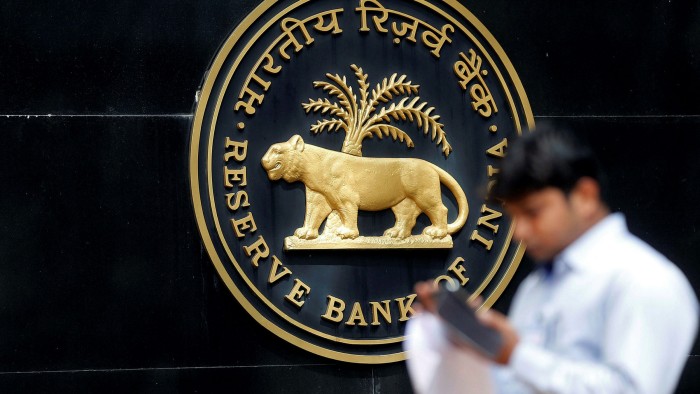India is coming around to the idea of foreigners owning its debt


Roula Khalaf, Editor of the FT, selects her favourite stories in this weekly newsletter.
India has long kept foreign investors in its sovereign bonds at arm’s length, wary of the volatility and currency turbulence that has befallen other, more welcoming, emerging markets.
The country has limited foreign portfolio investors to holding a combined 6 per cent of its total central government bonds. It also subjects interested parties to burdensome rounds of paperwork, know-your-customer and ultimate-beneficial-owner checks, ensuring that only the most determined investors plough ahead.
However, after years of talk about reform, that attitude may be starting to change. The Reserve Bank of India in March scrapped ownership limits on certain five, 10 and 30-year government bonds, carving out a chunk of the market for non-residents. Nine securities, totalling about Rs7.4tn ($99bn) are now “fully accessible,” with more to come.
India has long been resistant to borrowing in foreign currency, so liberalising its rupee-bond market represents one of its best bets for getting its securities included in popular global benchmarks, such as JPMorgan’s emerging markets government bond index. That would open up the country to billions of dollars worth of inflows from the passive funds that track them.
New Delhi’s need for foreign capital has arguably never been higher. Facing collapsing tax collections and revenues due to the economic blow of coronavirus, India increased its planned borrowing for the year to next March to Rs12tn, increasing its original target by more than half. Domestic debt markets remain under-developed, reliant on a relatively small pool of local banks.
But it is not clear that international investors are ready to build up their Indian holdings, opting instead to leave as the pandemic batters India’s economy and public finances. Foreign portfolio investors have pulled more than Rs1tn from domestic bond markets in 2020, reducing their holdings in government bonds to just 40 per cent of their existing allocation — despite the relaxation.
Teresa Kong, head of fixed income at Matthews Asia, who manages two pan-Asia funds, said the restrictions had long deterred her from investing in Indian government bonds despite her interest in entering the market. While welcoming the recent relaxations, she said further work was needed to give foreign investors an enticing and transparent way into the country. “India is still the most restrictive of the large emerging markets,” she said.
“They’re trying to do the right thing . . . [but] haven’t gone through the full steps of putting themselves in the investors’ shoes,” she added. “Over time, if you want consistent foreign investor flows, you need to truly liberalise.”
For decades, Indian policymakers have preferred to maintain a relatively high degree of control over bond markets to shield the rupee from the whims of foreign flows. Many Asian neighbours have been less conservative. Foreign holdings of local currency bond markets in Thailand and Indonesia, for example, totalled about 20 and 40 per cent respectively as of last year, according to DBS.
The prospect of being listed on global indices and tapping passive funds is worth taking seriously, say analysts. A partial listing on JPMorgan’s index could result in one-off inflows of $30bn, according to Goldman Sachs, rising far higher if India were to secure a place in other benchmarks such as the Bloomberg Barclays Global Aggregate index and the FTSE World Government Bond index.
A broadening of the market is likely to be a drawn-out affair, requiring further reforms such as a relaxation of the beneficial owner reporting requirements. Goldman puts the probability of inclusion in the JPMorgan index by the end of 2021 at 30 per cent, with lower odds for the other two.
“It’s a long process,” said Radhika Rao, an economist at DBS, “but we get the sense that the intent is more decisive this time.”
To attract more foreign investment, India will also need to keep close watch over its credit ratings, which have come under pressure as the pandemic squeezes tax receipts. India’s ability to reopen its economy has been complicated by a spiralling coronavirus caseload, with the number of infections rising faster to total 2.4m — the world’s third-highest tally, after the US and Brazil.
All three leading global rating agencies put India one notch above junk with both Fitch and Moody’s — which downgraded the country in June — maintaining negative outlooks.
Despite the obstacles, though, advisers say foreign investors willing to wait it out may be rewarded. With interest rates tumbling globally, deft management of the crisis by Indian authorities could ensure it becomes one of relatively few places with attractive returns. For investors willing to take the currency risk, India’s five-year, rupee-denominated government bond yield is currently at more than 5 per cent, for example, compared with just 0.3 per cent in the US.
If India is able to liberalise, said Abhishek Goenka, founder of advisory firm IFA Global, “the bond money will just flow in.”
Comments